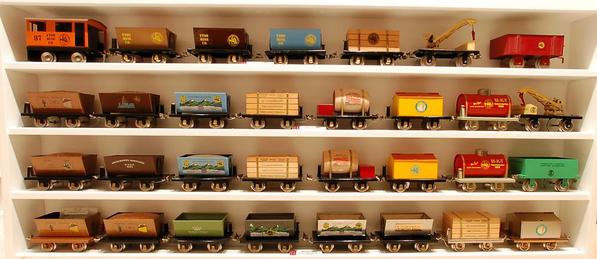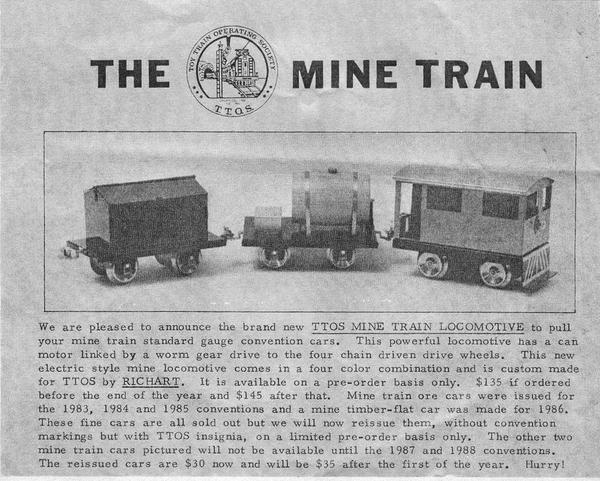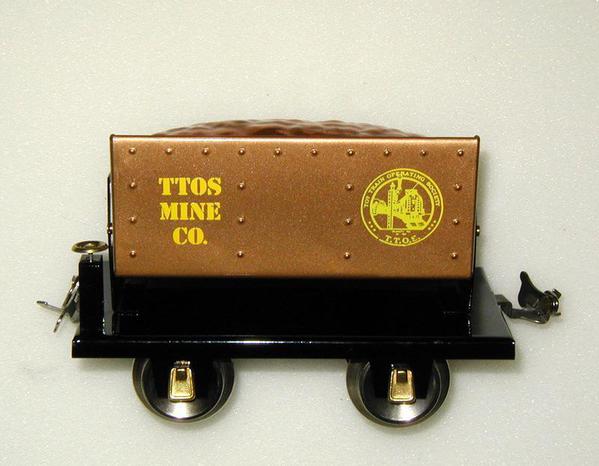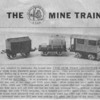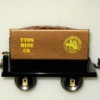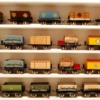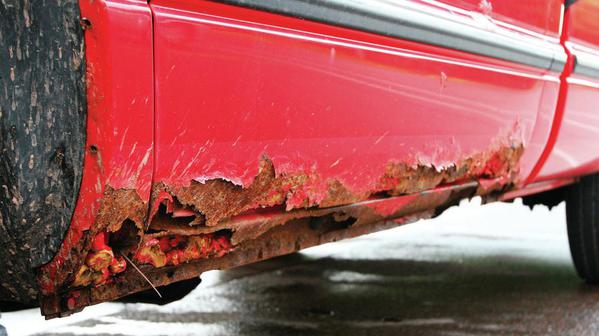I just unpacked a Richart mine loco and four cars that I got a great deal on. However, there are a couple of issues I could use some help with. First, the loco is missing the roof. The auction photos were taken from a low angle and it's not at all clear that the roof is missing. I could get my money back, but at the price I paid I'd rather deal with it. Does anybody have a photo of this engine looking down, showing clearly what the roof looks like? And does anyone by some bizarre chance have an extra roof to sell? I reckon I can make a roof or adapt something, but it would be nice to know exactly what it's supposed to look like. And even nicer if I could find a correct replacement. I know one guy who might have some RIchart parts and I'll be e-mailing him shortly.
Second, can someone who has one of these things tell me how fast it runs? This one runs fine and appears to be brand new (no wheel or roller wear), but it seems to run very slowly for a tinplate locomotive.
The locomotive came with three TTOS dump cars and one fixed bin ore car. They are all in decent shape except one of the dump cars is missing one of the studs that holds the dump bin in place. I can make the part, but it will be a bit of a pain because I don't have a lathe. I'll have to chuck a piece of brass rod in a drill and turn it with a file.
Thanks in advance.




